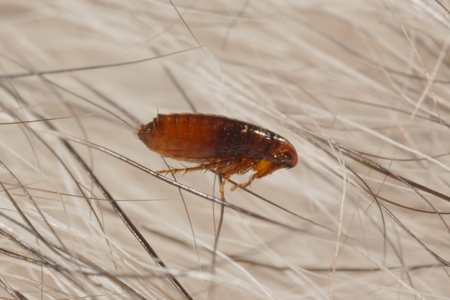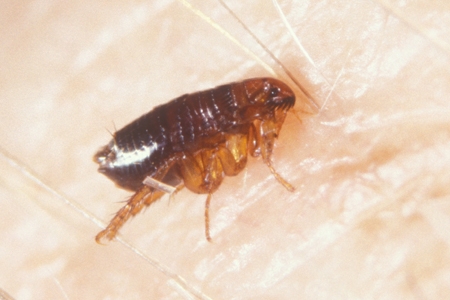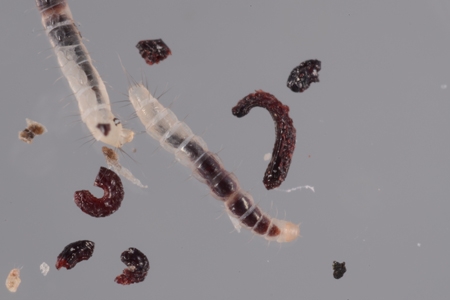Active Seasons




Fleas Appearance and Size Facts
Fleas are tiny, reddish-brown insects known for their ability to infest homes and cause discomfort to humans and animals. Measuring about one to 2.5 millimeters in length, fleas have flattened bodies that enable them to move swiftly through fur or carpets. Identifying fleas can be challenging, as they often remain undetected or are mistaken for other pests, underscoring the importance of accurate identification for effective pest control from Hulett.
Distinguishing Fleas From Other Pests
While visually similar to other small insects, fleas have distinctive characteristics that set them apart. Their laterally compressed bodies, specialized mouthparts for feeding on blood, and powerful hind legs for jumping are key features. Accurate identification is crucial for targeted flea control, and our professional pest control specialists at Hulett Environmental Services are trained to discern and address the challenges of flea control.
We offer flea extermination services in the following locations and their surrounding areas:

Behavior and Habitat of Fleas
Fleas have a relatively short life span of a few weeks, but during this time, they will reproduce rapidly. So, a small initial infestation can quickly escalate into a major problem. Fleas are nocturnal creatures, seeking hosts primarily at night. Fleas are proficient jumpers, using their powerful hind legs to leap onto hosts or navigate through various surfaces. While they prefer living on animals, if suitable hosts are available, fleas can infest indoor pets and humans, especially if they sleep in the same room.

Signs of Infestation of Fleas
Detecting a flea infestation in its early stages is crucial for effective control. Watch for these signs:
- Pet scratching. Increased scratching or biting behavior in pets may indicate a flea infestation.
- Tiny dark specks. Flea feces, resembling small dark specks, may be found on pet fur, bedding, or carpets.
- Red, itchy bites. Bites on humans, characterized by red, itchy welts, are indicative of flea presence.

Tips for Prevention of Fleas
Preventing flea infestations involves eliminating their preferred living environments and hosts. Keeping your home clean and organized is an essential first step. Make sure all food, especially pet food, is properly sealed. Furthermore, vacuuming carpets and upholstery regularly can help remove flea eggs and larvae. Additionally:
- Outdoor control. Treat outdoor areas where pets frequent to minimize the risk of flea infestations.
- Pet hygiene. Keep pets clean and regularly groomed and use flea prevention products recommended by veterinarians.
Getting Rid of Fleas
Prompt action is necessary to eliminate a flea infestation effectively, as they will multiply quickly if the problem is left unaddressed. DIY methods cannot guarantee complete elimination, so a comprehensive approach is essential for lasting results. Hulett’s pest control specialists bring over 50 years of experience in flea control, targeting visible and hidden infestations and providing the expertise you need to keep fleas away for good.
Effective Flea Control Solutions
When you bring in the experts from Hulett Environmental Services, we bring with us our comprehensive flea treatment plan to rid your home and yard of fleas and help prevent future infestations. Pest control professionals will thoroughly treat your home and yard to control these biting insects, helping to give your family and pets some relief. Maintain a pest-free environment by scheduling your free flea inspection with Hulett Environmental Services today! With Florida’s top specialists on flea infestation control, our expertise and cutting-edge techniques ensure fast and lasting results, providing you with the peace of mind you deserve. Call Hulett now for pest relief you can rely on.



